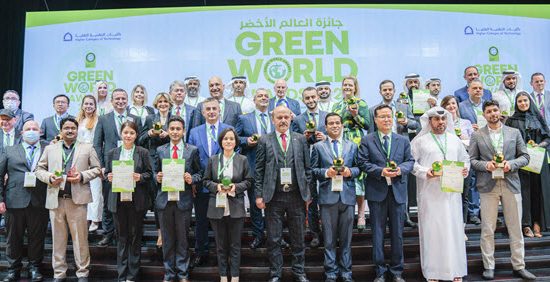
Turning rubble into homes, the Dutch style
AMSTERDAM, 2 days ago
In Dutch capital Amsterdam, a mobile factory, the size of two shipping containers, ingests rubble at one end, liquifies it into cement and spurts out Lego-shaped building blocks.
Call it rubble for the people, converting the deadly debris from disasters into homes and hospitals, cheaply and quickly.
It’s the brainchild of Gerard Steijn, a 71-year-old sustainable development consultant turned social entrepreneur, who leads the Netherlands-based project to recycle the rubble from natural disasters and wars.
He plans to create ecologically sound and safe housing by producing 750 building blocks a day from the debris, enough for one home at a cost of less than $20,000 each.
“In disasters, you have piles and piles of rubble, and the rubble is waste. If you are rich, you buy more bricks and rebuild your home,” Steijn said in a telephone interview.
“But what happens if you are poor? In disasters it is the poorest people who live in the weakest houses and they loose their homes first. I thought, what if you recycled the rubble to build back better homes for poor people?”
His rubble-busting Mobile Factory has fired the imagination of a landowner in Haiti and a civil engineer at the University of Delft. They have joined forces to test Steijn’s idea and build the first rubble community in Port au Prince next year.
But first they need money.
Steijn has launched an Indiegogo crowdfunding campaign to raise $400,000 to stress test the structures and build 20 homes in Haiti by next spring. If it succeeds, Steijn says Red Cross and United Nations’ officials have expressed interest. In its first 20 days, The Mobile Factory raised $2,215.
Three brightly painted concept homes stand in an industrial park in Amsterdam. Hennes de Ridder, an engineering professor at the University of Delft who donates his time to the Mobile Factory, exudes a child’s excitement in describing their sparse structural elements.
Each 20x10x10 cm (8x4x4 inches), snaps together Lego-style without cement or mortar allowing the home to flex under stress, he explains.
Bamboo poles inserted into the walls provide extra stability, while two bamboo poles and a steel cable anchor the roof, he explains.
“It’s very simple,” de Ridder said by telephone. “We eat the rubble, make high-quality concrete blocks. Like Lego, it is standardised in material and geometry.”
Unskilled people can build the homes with the blocks, which meet demanding Dutch construction standards to ensure they will last for many years. De Ridder expects further stress tests he planned for Peru in a few months will show the homes can withstand temblors of at least 6 on the Richter scale.
Some 6,759km away, Joel Dresse awaits the Mobile Factory’s arrival in September. The Belgian consulate is donating a 6,000 sq m plot outside Port au Prince once owned by his father to build the new community from rubble.
No stranger to recycling, Dresse’s wife runs the Caribbean Crafts factory employing 200 Haitians who recycle scrap into home decor sold worldwide.
He is offering 20 of its workers the opportunity for recycled homes in the community he has named Petit Paradis – a name he hopes will inspire Haitians scarred by the 2010 earthquake that killed over 230,000 and displaced 1.5 million people.
“I want to give people a perspective on what they can do for the future. I want them to have more than they imagine, where they will have a very nice piece of land, a very nice environment and a very nice home.
“And I like that it’s very ecological,” Dresse said.-Reuters
This entry passed through the Full-Text RSS service – if this is your content and you’re reading it on someone else’s site, please read the FAQ at fivefilters.org/content-only/faq.php#publishers.








